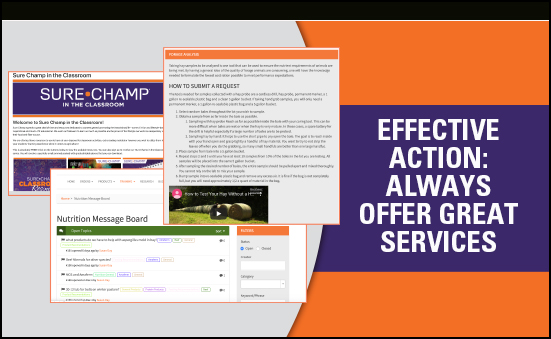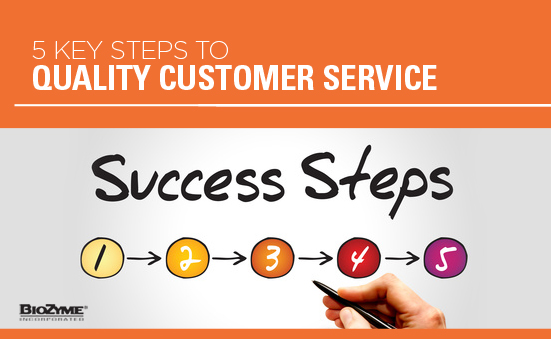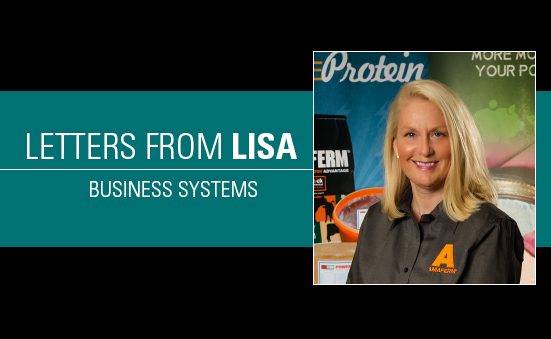Offering exceptional customer service seems like a given to keep your customers happy and returning to your business. However, offering outstanding service and offering great services are two different things. And to stay relevant in today’s business world, you need to also continually add services in addition to products to help your customers succeed in their businesses. Luckily for the BioZyme® Dealer Network, a variety of services are readily available for you to officer your customers to help add value to their experiences and will keep them wanting to return to your business.
- Nutrition Services
At BioZyme, we realize that knowing what supplements are most important to your animals’ diet depend on what they are already getting in their feed. That is why we offer a forage testing service along with ration balancing to keep your customers’ animals getting the proper amounts of nutrients they need to strive and survive. Your ASM can help you get started with collecting samples and getting them submitted for analysis. Once the samples have been analyzed, and the results are produced, the Nutrition Team will work with you and your customer to determine a ration that will best fulfill the animals’ requirements for a specific production period.
In addition to the hay testing and ration balancing services, your customers might like to access the Hay Analysis Tool online. This tool allows customers who have had their hay tested to input three numbers to help them calculate the additional energy and protein needed. All that needs entered is the amount of crude protein, amount of energy and the month you will start calving. - Online Calculators
Let’s face it. At the end of the day, the most important thing to our customers is profitability, and we’ve created tools that will help you help them become more profitable with the BioZyme products. There is a suite of Cost Calculators that will help you show your customers the advantages of the products and the money they can save or make by using the products. Calculators include a Gain Calculator that helps figure the additional gain advantage from feeding VitaFerm; a Conception Calculator, used to calculate the additional advantage per calf from VitaFerm; a Forage Savings Calculator, to compute the hay savings per pair from VitaFerm; and an Amaferm® Value Calculator, used to determine the additional advantage per day for your herd from feeding Amaferm.
One of the most beneficial ways to remain profitable in the cow-calf business is to have shorter calving windows. BioZyme has also provided a Gestation calculator and a Gestation table to help producers take the guess work out of breeding and calving dates.
- Educational Resources
For the livestock exhibitor, 4-H leader or FFA advisor, www.surechamp.com offers an array of educational checklists, articles and videos on animal selection, care, feeding, fitting and showing. These are geared toward beginners, but also provide timely information on current industry trends, a glossary of terms and are suited for all levels.
- Additional Expertise
Perhaps one of the best parts of being part of the BioZyme Dealer Network is you’re not alone. Regardless of your location, there is always someone who is available and willing to assist you and your customers with a question. Reach out to your ASM, the nutrition team, marketing staff or anyone you’re comfortable visiting with to ask questions and get them answered. You can also search questions that have already been asked and get yours answered on the Message Board in the Online Dealer Center at www.biozymedealer.com.
We sell great products every day. But when you add great services to those products, you are keeping yourself relevant in the business circles and staying ahead of your competition. Customers appreciate both a great product and the services that seem like you are going an extra mile. But with these services already available, you’re ready to take that step.





